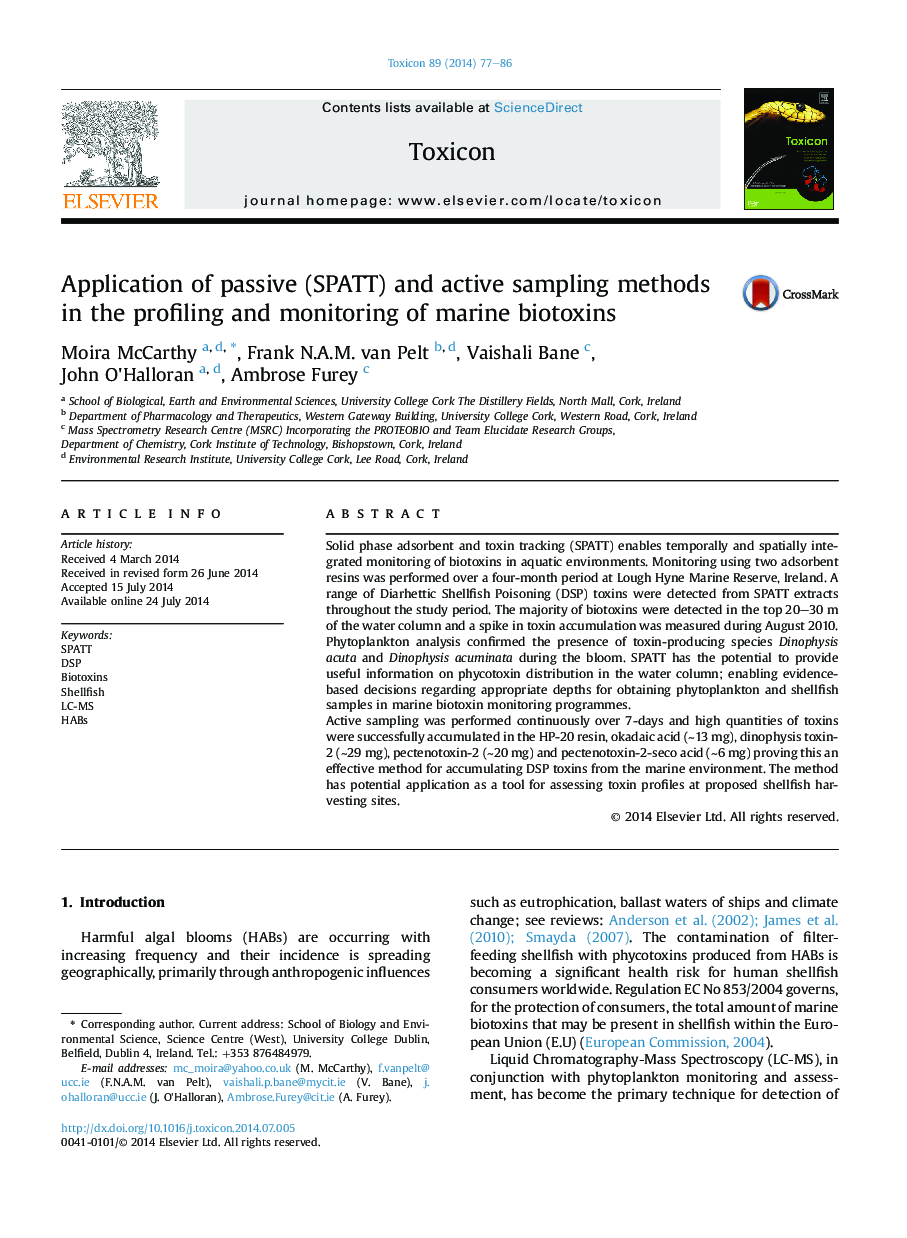| کد مقاله | کد نشریه | سال انتشار | مقاله انگلیسی | نسخه تمام متن |
|---|---|---|---|---|
| 2064645 | 1544146 | 2014 | 10 صفحه PDF | دانلود رایگان |

• This study used active and passive (SPATT) sampling methods for accumulation of DSP biotoxins.
• Active toxin sampling successfully accumulated high quantities of marine biotoxins.
• SPATT was used to investigate temporal and spatial stratification of toxin-producing species in the water column.
• Algal toxins were detected from the surface to 30 m in the water column.
• Shellfish Farms may be exposed to toxic algae at depths greater than recommended by some phytoplankton sampling protocols.
Solid phase adsorbent and toxin tracking (SPATT) enables temporally and spatially integrated monitoring of biotoxins in aquatic environments. Monitoring using two adsorbent resins was performed over a four-month period at Lough Hyne Marine Reserve, Ireland. A range of Diarhettic Shellfish Poisoning (DSP) toxins were detected from SPATT extracts throughout the study period. The majority of biotoxins were detected in the top 20–30 m of the water column and a spike in toxin accumulation was measured during August 2010. Phytoplankton analysis confirmed the presence of toxin-producing species Dinophysis acuta and Dinophysis acuminata during the bloom. SPATT has the potential to provide useful information on phycotoxin distribution in the water column; enabling evidence-based decisions regarding appropriate depths for obtaining phytoplankton and shellfish samples in marine biotoxin monitoring programmes.Active sampling was performed continuously over 7-days and high quantities of toxins were successfully accumulated in the HP-20 resin, okadaic acid (∼13 mg), dinophysis toxin-2 (∼29 mg), pectenotoxin-2 (∼20 mg) and pectenotoxin-2-seco acid (∼6 mg) proving this an effective method for accumulating DSP toxins from the marine environment. The method has potential application as a tool for assessing toxin profiles at proposed shellfish harvesting sites.
Journal: Toxicon - Volume 89, October 2014, Pages 77–86